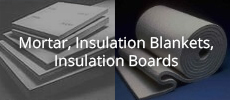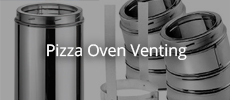 ), then cover with plastic sheeting or cling wrap.
), then cover with plastic sheeting or cling wrap.
Announcement
Collapse
No announcement yet.
28" homebrew cast oven in walled enclosure Belgium
Collapse
X
-
You will need to fill voids in the casting while it is still moist so removal of sand and newspaper after about 48 hrs after casting is called for. take some dry home-brew mix and sieve out the coarse sand which will give you a finer mix to force into the voids. add just enough water to make a peanut butter (smooth not crunchy) consistency. Then cover the whole casting with wet hessian or wet blankets (if that suits your personality better ), then cover with plastic sheeting or cling wrap.
), then cover with plastic sheeting or cling wrap.
- Likes 1
-
Quick question: after casting the dome with homebrew, do I cover it in cling film for a week to keep moist? Or use wet blankets?
Leave a comment:
-
Yes, you’ll probably need to cut at least 100 mm off the bottom so you can manoeuvre it out the oven mouth. The sand holds everything in place.
Leave a comment:
-
Thanks David, much appreciate your feedback!
Yes, I might have to shorten the central stick a bit and put it on top of something to prevent it being stuck inside.
Leave a comment:
-
All good so far. Creating the sand hemisphere is actually easier than you’d think. Eyeballing the profile and tapping the surface with the flat of a Bricklayers trowel produces a perfect hemisphere. The central stick to determine the height of the dome is better if it’s lightweight so it doesn’t, become a problem to remove from the casting. You can also stack some polystyrene boxes in the middle of the sandcastle to save on the amount of sand required. They are really easy to break up when you need to remove them. After casting the dome you will need to cut another mould plate, slightly larger than the oven mouth plate, to form the rebate at the oven mouth which will accomodate the oven door.
Leave a comment:
-
-
Hi guys, looking for some confirmation that I’m doing things right before I start casting…
Here’s the oven opening mould, I drew a line and indicated ‘sand’ and ‘cast’ on it, this would result in this cross sectional view.
My reasoning for the ‘sand/cast line’ is that if I would put sand right up into the corner where the OSB-board and Alluminum sheet meet I would end up with a sharp and fragile edge as is drawn below.
Is my reasoning correct and can I go ahead like this?
Leave a comment:
-
This is where I'm at right now: the oven floor and perlite/vermicrete insulation layer are covered for rain and wind while I'm waiting for the fireclay to arrive, it should arrive tomorrow, but I won't be casting untill next weekend because I will be picking up some free slates and roof tiles for the roof. I'll get them both so I can see what I will like most.
I've also 'test stacked' the arch below and I think it looks great, but I'm not going to finish it yet, I first want to see how it looks like having two arches above each other, when the oven and decorative arch are in place, maybe I won't like it after all.
Leave a comment:
-
Honestly, at the oven cooking temps (350-500C) I can't tell a difference between different woods. It all burns so hot you don't even get much smoke. I really like oak because it gets the oven hot faster.Originally posted by Kris S View PostI've got a sheer endless supply of willow and oak, but read that fruit woods are considered excellent for cooking with. I have a little bit of apple and plum (close up picture) and also stocked some cherrywood.
The build is looking great!
Leave a comment:
-
Well the sides would be butressed as the arch is meant to sit under the hearth inside the opening where I would store some wood. It's not for the free standing decorative oven opening arch
Maybe I can put some support under the arch in place as well, it wouldn't be very visible.
Leave a comment:
-
I think what you want is called a "Segmental Arch". It's the design that's in the original FB plans. They're nice because they give more headroom for pans and such, but they're not as strong as a true arch.
the arch in the pic you shared looks like it could have some problems over time, due to side thrust.
Leave a comment:
-
The flatter the arch the greater the sideways thrust and the problem is exacerbated by a heavier load on the arch from the top.The semicircular arch is not bad, but with the sides un-supported by buttressing still has quite a lot of sideways thrust. The pointed gothic arches developed to reduce the sideways thrust experienced with the semicircular arch. The only arch that can stand up with no, or failed, mortar joints is the catenary arch, as long as its base is not wider than its height. In the end you do what you can get away with.
Leave a comment:
-
Here's an exmple of what I don't want: a semi circular arch:
And this is more or less what I would like: a flatter arch.
Maybe I should also try to taper the first 2 'corner' bricks as they did here?
Leave a comment:
-
I've got some other smaller bricks 5cm thick that I would like to make a nice arch with for the wood storage area under the hearth.
I went ahead and tried to arrange them free hand in a kind of low arch, Do you think this could work and not collapse? The more I look at it, the more it looks unstable?
I would like to use a 'flattened arch' instead of a true semi circular arch.
any advice on this?
is this doable without having to cut and taper (some or all of) the bricks?
edit: the internal widt of the arch in this case is 68cm and the heigth 27 cm.
Last edited by Kris S; 04-19-2021, 12:56 AM.
Leave a comment:





Leave a comment: